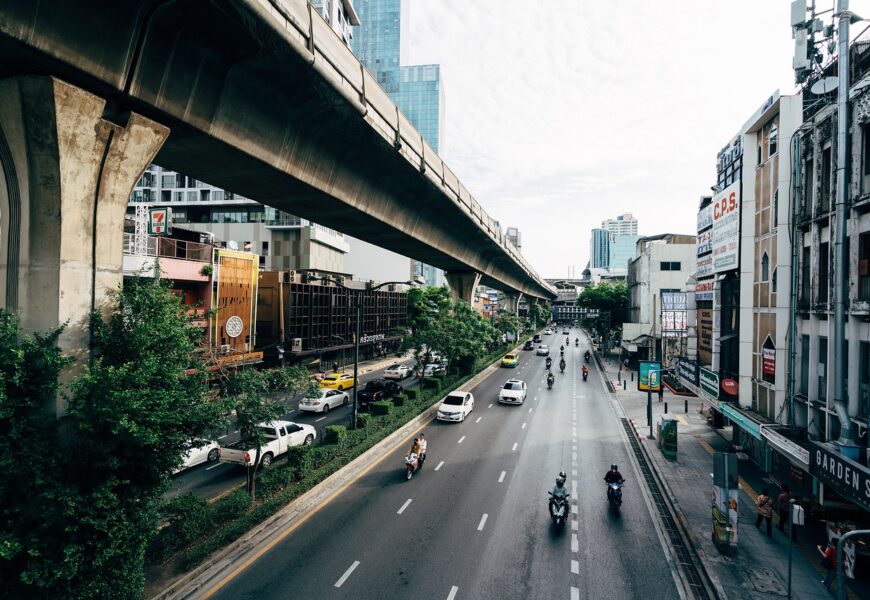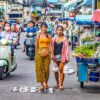Thailand’s urban landscapes offer an extraordinary tapestry of cultural richness, historical depth, and modern dynamism that captivates travelers from around the world. Each city presents a unique narrative, blending ancient traditions with contemporary urban experiences that showcase the country’s remarkable diversity. From the pulsing metropolis of Bangkok to the serene northern cities, Thailand’s urban centers represent much more than mere geographical locations – they are living, breathing ecosystems that tell the story of a nation’s evolution, cultural identity, and incredible potential.
Bangkok: The Vibrant Capital of Thailand
Bangkok stands as Thailand’s most iconic and dynamic urban center, a metropolitan marvel that seamlessly blends traditional Thai culture with cutting-edge modernity. With a population exceeding 10 million, the city is a bustling hub of economic activity, cultural expression, and international connectivity. Visitors are immediately struck by the city’s remarkable contrasts – ornate Buddhist temples standing alongside gleaming skyscrapers, traditional street markets adjacent to luxurious shopping complexes, and centuries-old traditions coexisting with contemporary global influences.
The city’s infrastructure is remarkably sophisticated, featuring an extensive public transportation system including the BTS Skytrain and MRT subway, which efficiently navigate the complex urban landscape. Bangkok’s culinary scene is equally impressive, offering everything from world-renowned street food to Michelin-starred restaurants that showcase the depth and complexity of Thai cuisine. Key attractions like the Grand Palace, Wat Pho, and Chatuchak Weekend Market provide visitors with immersive experiences that capture the city’s rich historical and cultural heritage.
Chiang Mai: The Cultural Heart of Northern Thailand
Nestled in the mountainous region of northern Thailand, Chiang Mai represents a profound contrast to Bangkok’s urban intensity. With a population of approximately 200,000, this city offers a more relaxed and culturally authentic experience that attracts travelers seeking deeper connections with Thai traditions. Founded in 1296, Chiang Mai boasts a remarkable historical legacy, evident in its well-preserved ancient city walls and numerous historic temples that dot the urban landscape.
The city has emerged as a significant cultural and educational center, hosting numerous universities and serving as a hub for traditional Thai crafts and artisan practices. Its cooler climate and surrounding natural beauty make it a popular destination for digital nomads, cultural enthusiasts, and those interested in exploring Thailand’s rich northern traditions. The annual Yi Peng Lantern Festival, where thousands of illuminated lanterns are released into the night sky, exemplifies the city’s magical cultural experiences.
Phuket: Thailand’s Premier Coastal Urban Destination
Phuket represents Thailand’s most prominent island city, offering a unique blend of urban amenities and stunning coastal landscapes. As the largest island in Thailand, it serves as a major economic and tourism center, attracting millions of international visitors annually. The city’s infrastructure has developed dramatically over recent decades, transforming from a relatively small coastal settlement to a sophisticated urban destination with world-class resorts, international airports, and comprehensive tourism facilities.
The urban environment of Phuket Town showcases a fascinating Sino-Portuguese architectural heritage, reflecting the complex historical interactions that have shaped the region. Visitors can explore intricate historic districts, vibrant markets, and a diverse culinary scene that combines traditional Thai flavors with international influences. The city’s strategic location also makes it an ideal gateway for exploring the stunning Andaman Sea and surrounding tropical islands.
Chiang Rai: A Hidden Urban Gem in Northern Thailand
Often overlooked by mainstream tourism, Chiang Rai offers a fascinating glimpse into Thailand’s northern cultural landscape. Located near the infamous Golden Triangle region where Thailand, Laos, and Myanmar converge, the city provides unique insights into the complex ethnic and cultural diversity of Thailand’s mountainous regions. Its relatively small population of around 70,000 belies its significant cultural and historical importance.
The city is renowned for its stunning architectural landmarks, including the iconic White Temple (Wat Rong Khun), a contemporary artistic masterpiece that reimagines traditional Buddhist temple design. Chiang Rai serves as an important cultural and economic center for the surrounding hill tribe communities, offering visitors authentic experiences of Thailand’s indigenous cultures and traditions.
Conclusion: Thailand’s Urban Diversity
Thailand’s cities represent far more than mere geographical locations – they are living narratives of a nation’s complex history, cultural richness, and ongoing transformation. Each urban center offers a unique perspective on Thai society, from the cosmopolitan energy of Bangkok to the cultural depth of Chiang Mai and the coastal sophistication of Phuket. Travelers seeking to understand Thailand’s true essence must explore these diverse urban landscapes, each presenting its own distinctive character and compelling story.
By embracing the complexity and diversity of Thailand’s cities, visitors can gain profound insights into a culture that seamlessly blends tradition and modernity, creating an unparalleled travel experience that resonates long after the journey concludes. Whether you’re drawn to historical exploration, culinary adventures, cultural immersion, or contemporary urban experiences, Thailand’s cities offer something truly extraordinary for every type of traveler.









